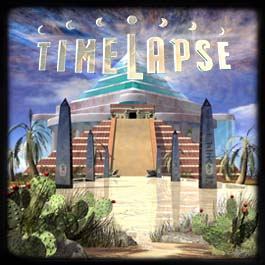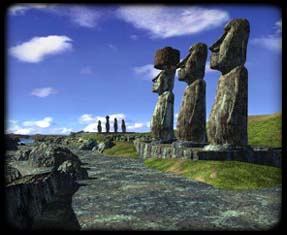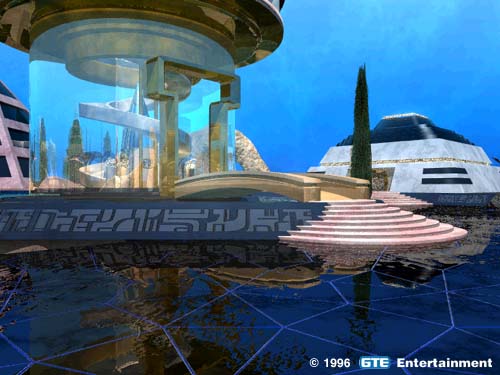

Plot: Discover an alien race, explore ancient civilizations, and
shatter the theories of modern science. Subtle yet prominent
similarities in architecture, astronomy, language, mathematics, and
traits of other advanced cultures have led him to conclude that there
must be a link between the lost civilizations of the ancient Egyptians,
Maya, Anasazi, Easter Island, and the mythical city of Atlantis. His
life's work has been dedicated to finding this link. Professor Nichols
is convinced Atlantis existed -much to the dismay of the University
where he is a full-tenure faculty member in the Archaeology department.
If he can discover the fabled lost city, he'll find the evidence that
will vindicate his theories and stop the endless ridicule he has endured
from his colleagues in the academic community.

At a remote dig site on Easter Island the professor befriends an old native shaman. With his help, the professor deciphers a set of wooden rongo rongo boards and other strange but similar markings found on various artifacts from other civilizations. Before dying, the shaman directs the professor to an ancient family burial cave. Inside the cave he discovers an alien device. This is perhaps the greatest archaeological discovery of all time - a time gate. In it, he sees images of past worlds, brilliant scenes, flowing by like clouds. Finally, the professor has found the link he has been searching for his entire life. Excited at his find, he sends off an urgent communiqué asking you to come at once to Easter Island. However, the professor cannot contain his excitement and decides to go through the time gate ahead of you, armed only with his journal and an instant camera to take photos.
After going through the time gate, the professor realizes that for some peculiar reason the portal is preset to travel to the Egyptian, Mayan, and Anasazi civilizations at a pivotal time in their histories - the time their cultures vanished. Atlantis, however, is mysteriously inaccessible. One by one the professor visits each ancient civilization documenting his astonishing travels and discoveries in his journal. However, while exploring each civilization, the professor soon senses he is not alone. There is a presence watching him, yet he cannot explain what it is.
Upon arriving in Atlantis the professor discovers through video kiosks that the Atlanteans are an offspring of a peaceful and noble alien race whose home world is light years away in the Andromeda Galaxy. Thousands of years ago an enormous colony vessel visited Earth. An outpost ship detached from the mother ship and landed on an unpopulated island continent. What came to be known as Atlantis, grew slowly around the outpost ship and was populated over time by a great hybrid race. The Atlanteans explored and traveled Earth through space and time by constructing timegates. During these explorations they discovered several promising civilizations at their fledgling states and built timegates to each of them including: Egypt, Mayan, Anasazi, and Easter Island. To further these civilizations, the Atlanteans offered the gift of genetic enlightenment to the most advanced and high born in each world: the pharaohs, shamans, priests, and tribal leaders.
Over generations this enlightenment manifested itself in the form of
great intellect and prowess in areas such as architecture, astronomy,
writing, mathematics, and science. The Atlanteans also visited the
leaders of these cultures at various times and assisted them with
immense
undertakings such as the construction of the great pyramids of Giza and
the transport of huge Easter Island moai statues. On occasion some of
the Atlanteans' great feats would be witnessed by large crowds
generating countless myths and folklore for each culture that have
survived to this day.

To protect this gift of enlightenment, the Atlanteans placed the refined genetic material into special pods adorned with native artwork, securing and distributing them across three worlds (Egypt, Mayan, and Anasazi). As each culture matured, the Atlanteans offered the opportunity to emigrate to the alien home world and advance to a higher plane of existence. Many civilizations, such as the Anasazi, chose to go and were taken through the timegates to Atlantis for transport to the orbiting mother ship.
Others did not choose to go and remained behind on Earth. Due to the unpredictable nature of humans, even with the positive genetic influence of the Atlanteans, some cultures ultimately never flourished. Easter Island eventually resorted to cannibalism and the Mayans inherent warlike ways never changed, resulting in the inevitable downfall of the civilization. The Atlantean outpost ship remained on Earth with a minimal support crew to continue its research after the orbiting colony ship begun its long journey home.
Gameplay: With the help of a notebook, camera, and puzzle solving you will move through realms at the height of their development in Easter Island, Mayan, Egypltian, Anasazi and finally Atlantis. The interactively is limited and it is impossible to die, not a bad thing, but the plot is weak.
Interface:
Artificial intelligence:
Graphics: High-resolution, first-person adventure game with still frame navigation seen in Myst and Welcome to the future. Bright, full screen, ray-traced graphics, complete with outdoor light, shadows, and true reflectivity are beautiful.
Voice actors:
Music score:
Sound effects:
Multi-player:
The future:
Previews references:
Chris Hudak, www.gamespot.com/previews/timelaps
www.game-revolution.com/games/pc/timelapse.htm
www.shoplet.com/software/db/379227.html
Al Giovetti, Welcome to the Future, Computer Player, 1996